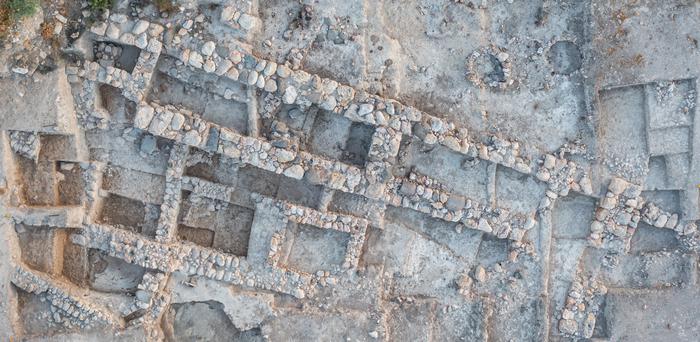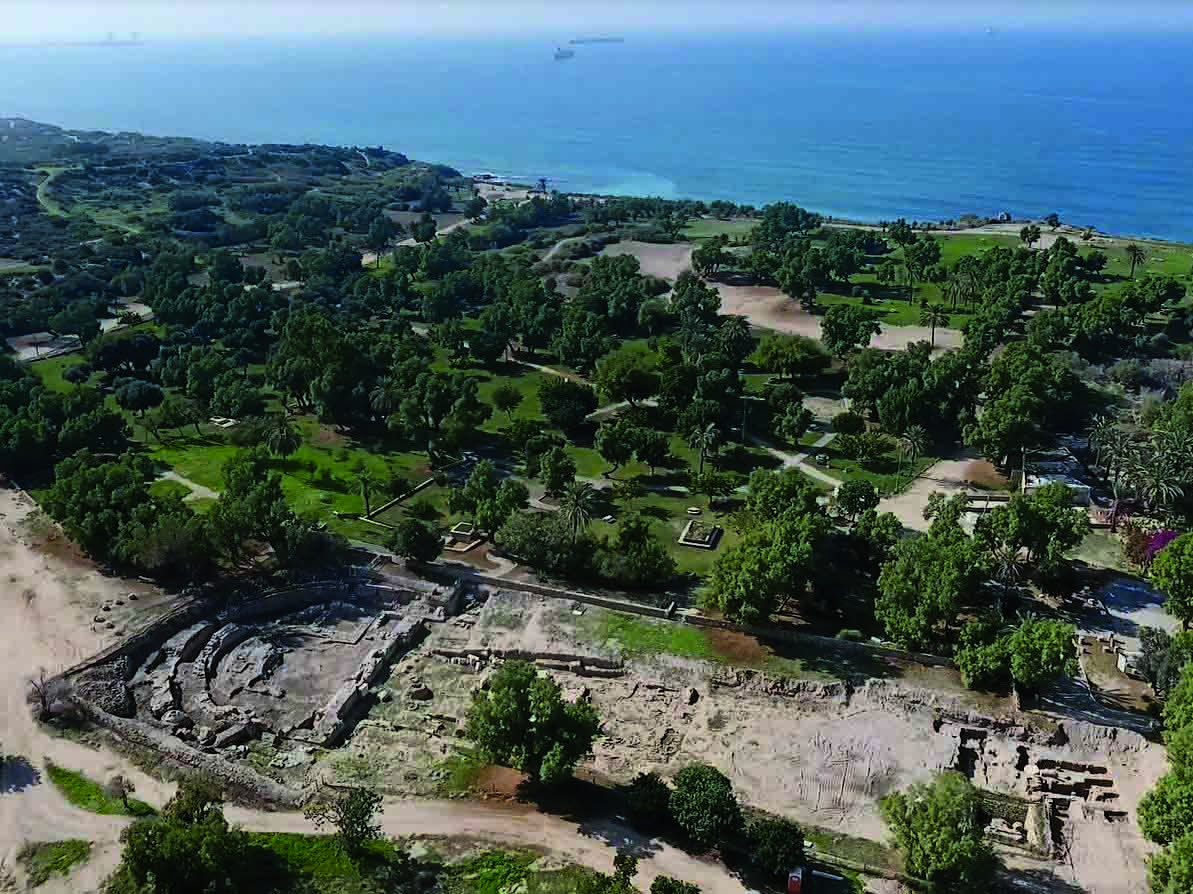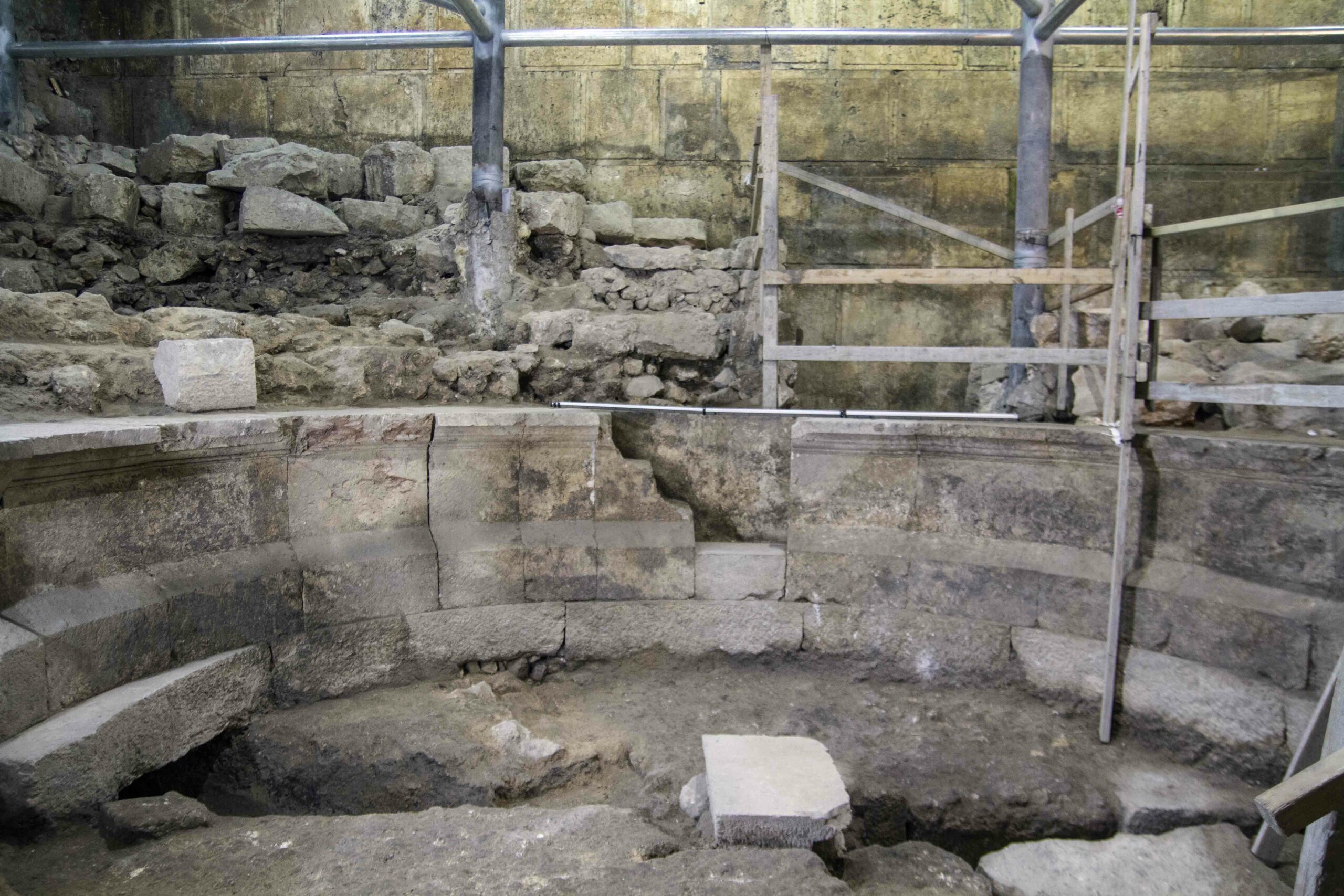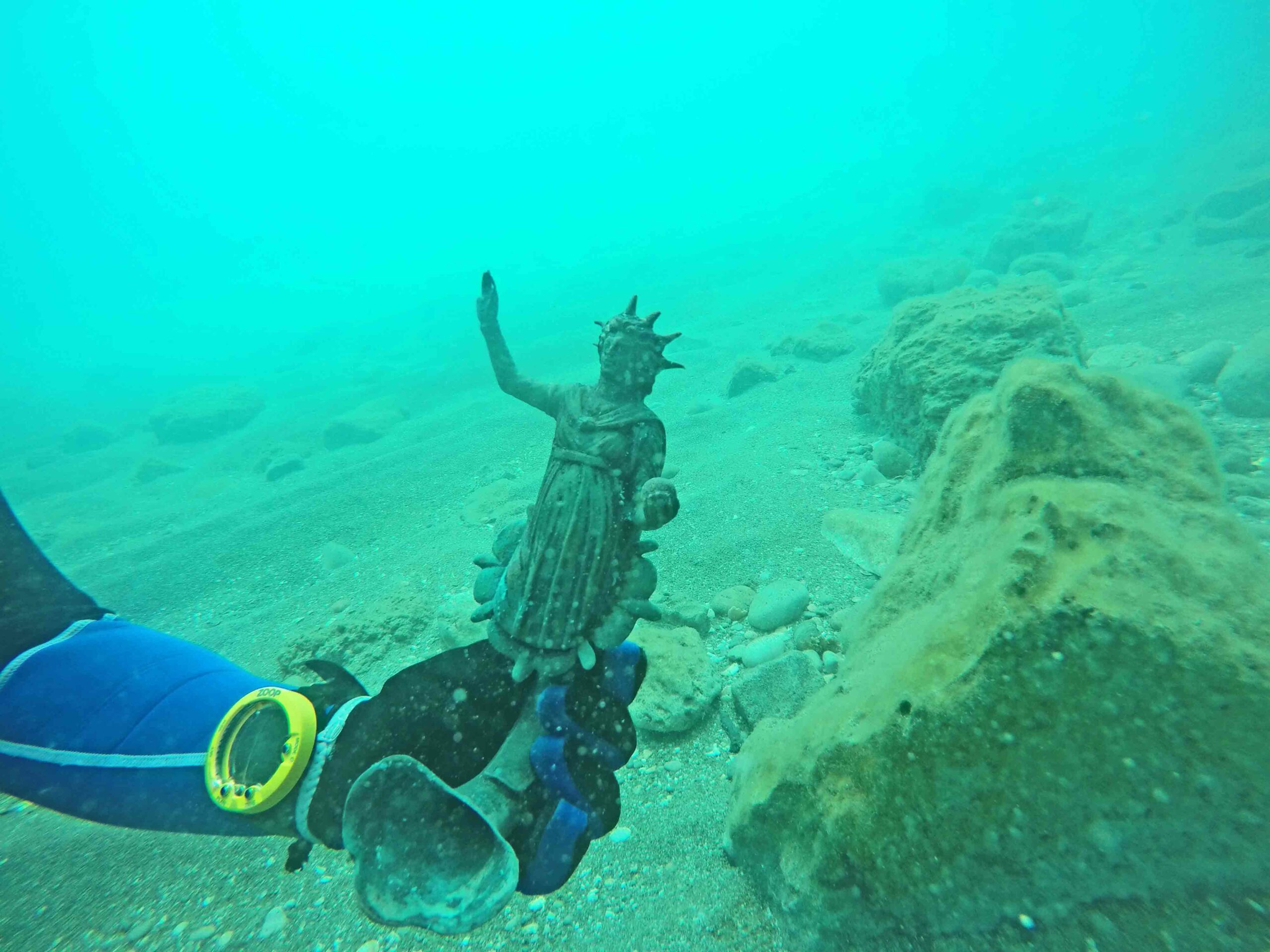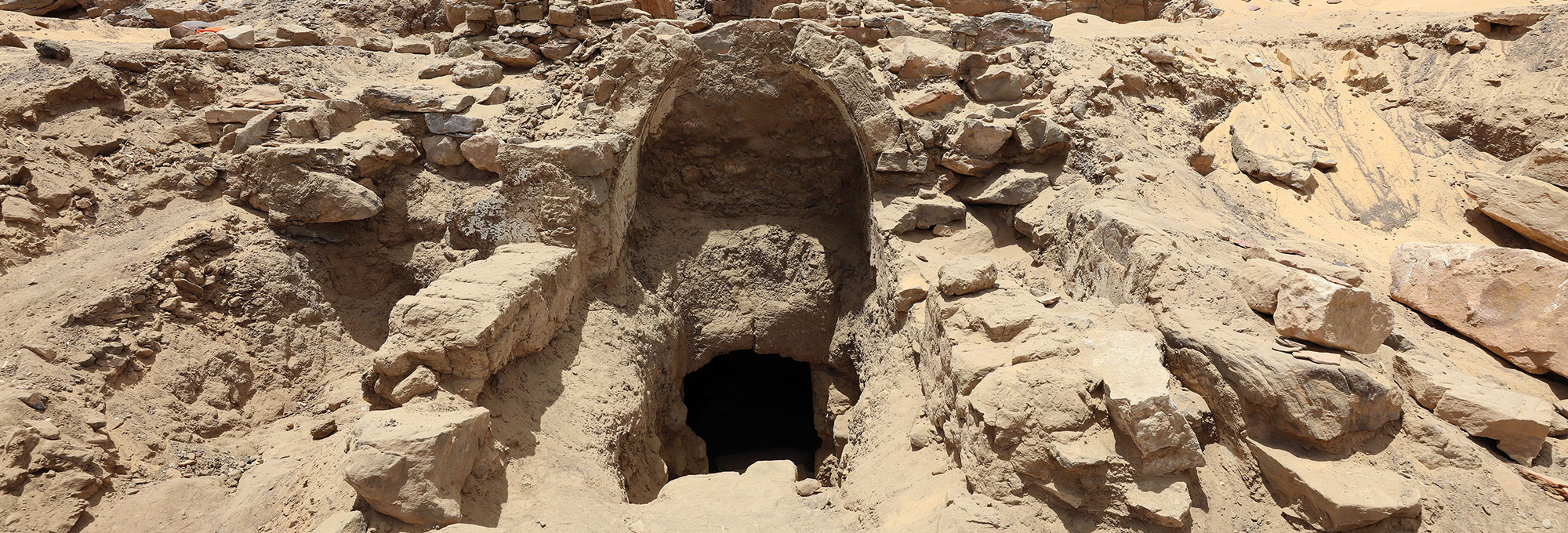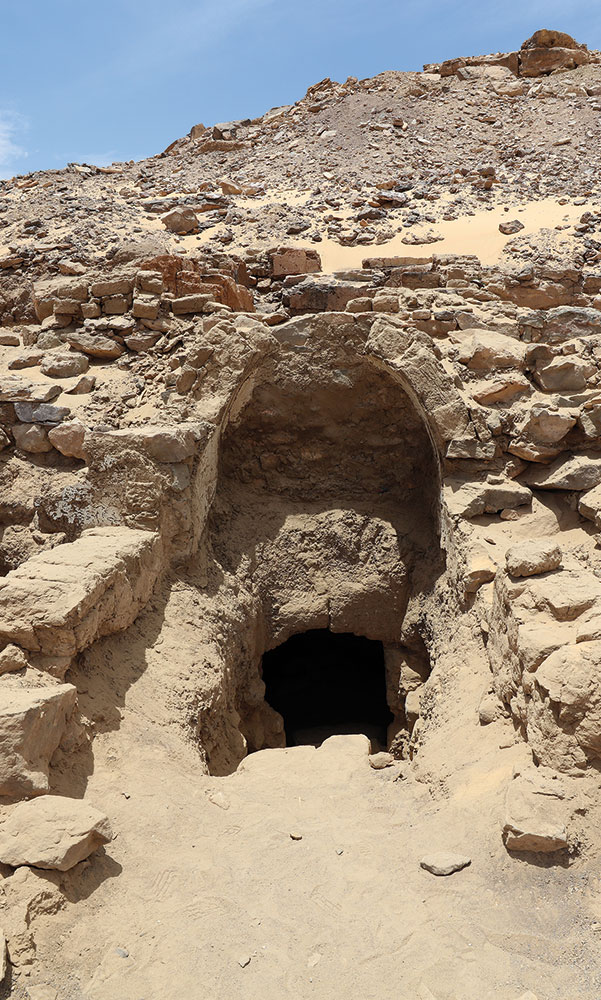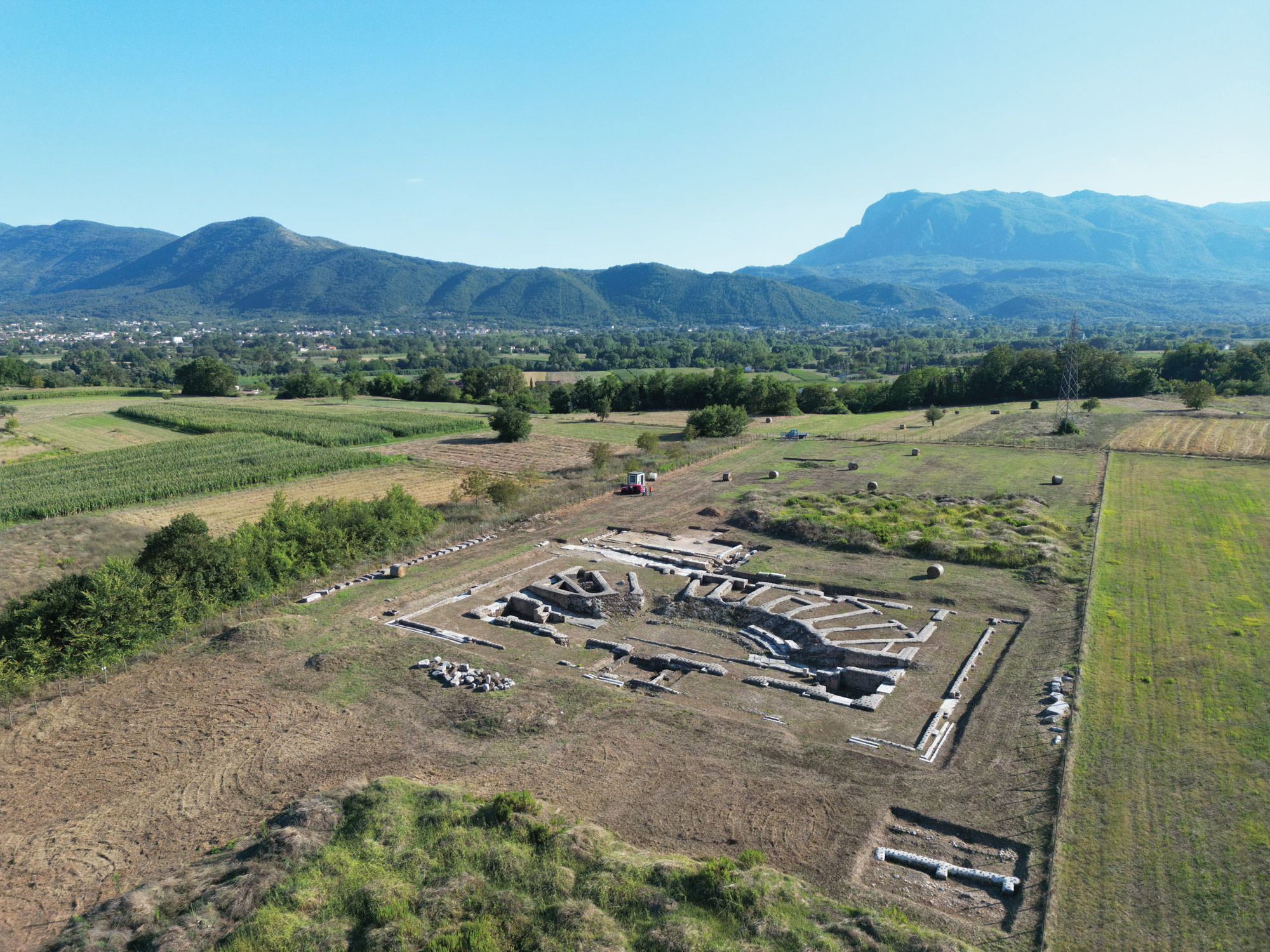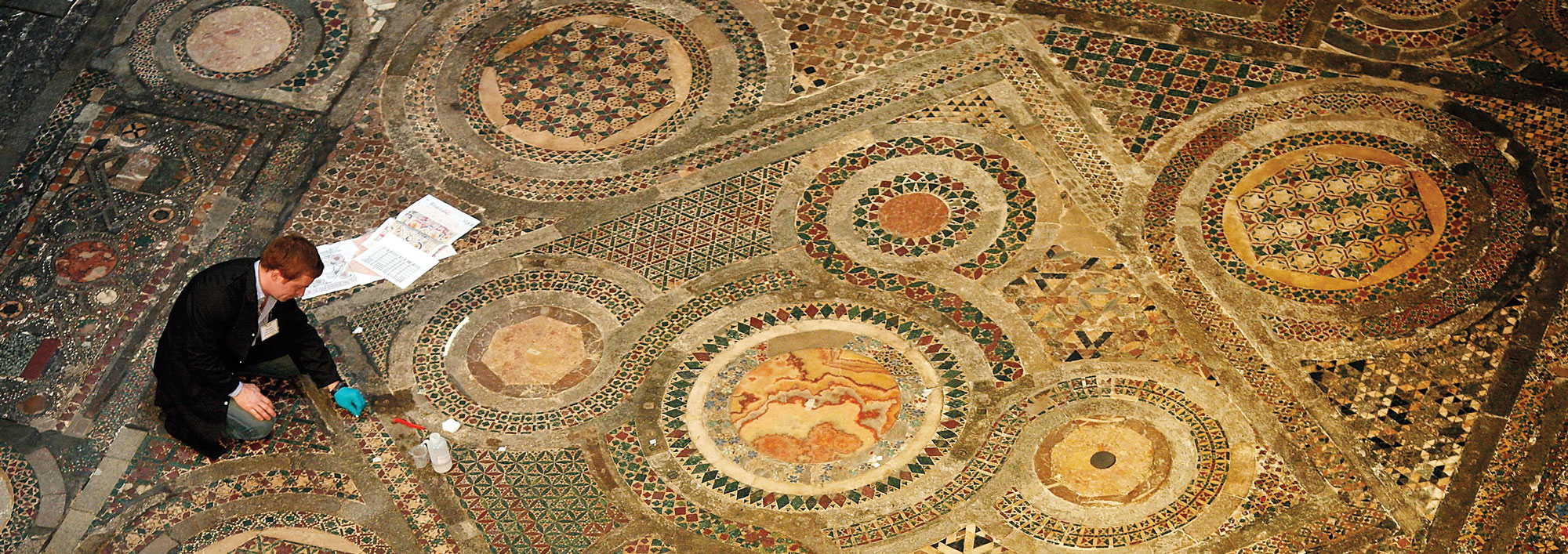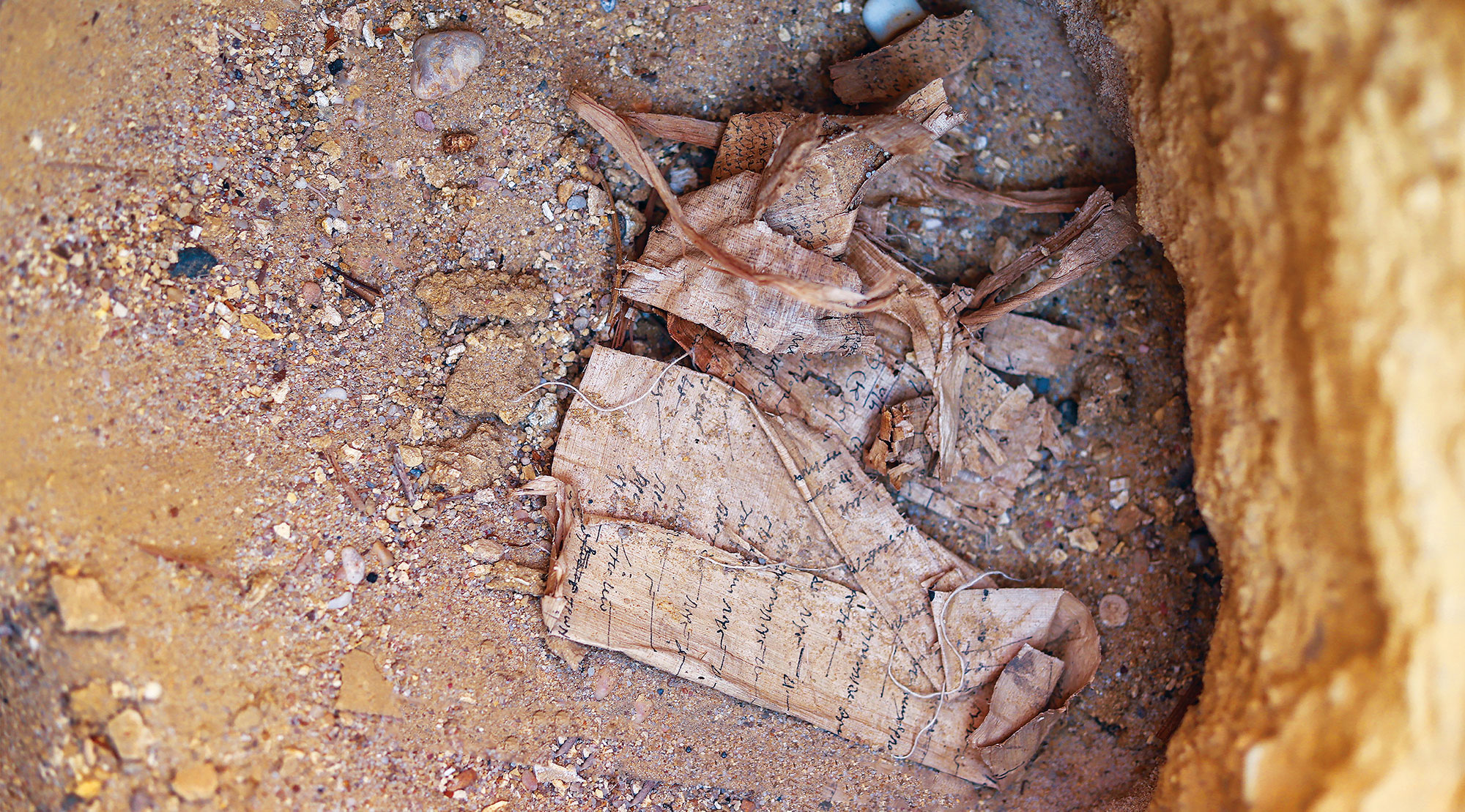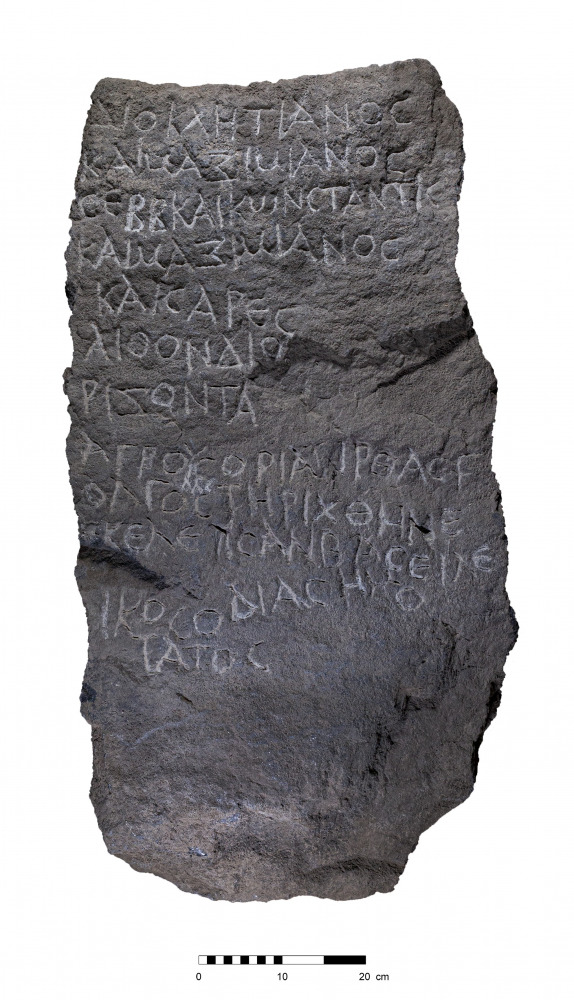
METULA, ISRAEL—According to a report in The Jerusalem Post, researchers from the Hebrew University and their colleagues have discovered a Roman boundary stone estimated to be 1,720 years old in the Upper Galilee. The inscribed stone had been reused about 1,000 years later, during the rule of the Mamluk Sultanate, in the construction of a building. The basalt slab bears an inscription in Greek that provides information about land ownership, taxation, and rural administration during the Tetrarchy period between A.D. 293 and 306, when the Roman Empire was governed by two senior and two junior rulers. It reads, “Diocletian and Maximian, the Augusti, and Constantius and Maximian, the Caesars, ordered the placement of this stone marking the boundaries of the fields of the settlements of Tirathas and Golgol. Made under the supervision of Basiliakos.” Avner Ecker and Uzi Leibner of the Hebrew University said that the two villages named in the inscription were previously unknown to scholars. The inscription is also the first known reference to Basiliakos, an imperial tax official. “This is an impressive testimony to the meticulous administrative organization of the Roman Empire during the Tetrarchy period,” Leibner said. To read about a similar stone unearthed in Rome that demarcated the city's sacred precinct, go to "Rare Boundary Marker," one of ARCHAEOLOGY's Top 10 Discoveries of 2021.


